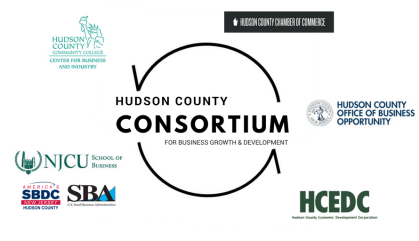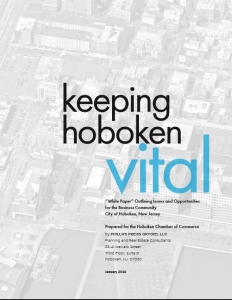By Maria Nieves, President & CEO
To read the news coverage of Governor Phil Murphy’s FY 2019 Budget Proposal is to know that there is widespread agreement that New Jersey’s school funding formula is not fair. There seems to be little agreement, however, on how to fix it and the battle lines have been drawn around not so much how much additional funding to allocate in this year’s budget, but how to allocate the added funding among New Jersey’s nearly 600 school districts.
Because the New Jersey School Funding Reform Act of 2008 is critical to understanding the ongoing debate with regard to Governor Murphy’s FY 2019 Budget Proposal; and to understanding the context in which a 1% employer payroll tax is proposed for Jersey City, we’ve provided a quick overview on both the NJ SFRA and the school aid funding levels proposed by Governor Murphy.
It’s difficult to gain a good understanding of how New Jersey distributes state school aid funding, without first considering the creation of “Abbott” school districts in 1985. Prior to 2008, the bulk of state aid went to 31 poor school districts that were named “Abbott” districts for plaintiff Raymond Abbott, a Camden City student. Abbott districts formed the basis for the State’s school funding model for more than 30 years and continue to have an impact on funding today.
- “Abbott” districts are school districts that were provided remedies to ensure their students received public education in accordance with the State constitution. They were created in 1985 as a result of the first ruling of Abbott v. Burke, a case filed by the Education Law Center. The ruling asserted that public primary and secondary education in poor communities throughout New Jersey was unconstitutionally substandard.
- The New Jersey Supreme Court in the Abbott II ruling of 1990 explicitly limited the Abbott programs and reforms to a class of school districts identified as “poorer urban districts” or “special needs districts.”
- The Abbott II ruling in 1990 had the most far-reaching effects, ordering the state to fund the (then) 28 Abbott districts at the average level of the state’s wealthiest districts. The Abbott district system was replaced in 2007 by the New Jersey Schools Development Authority.
- The Court in Abbott II also gave the New Jersey Legislature the authority to classify additional districts as Abbott districts based on a set of criteria. Such identification would entitle the children in those districts to Abbott programs and reforms. In 1998, the Legislature classified 3 additional districts, bringing the 2009 total of Abbott districts to 31. Since the 1990s no district has been removed from the Abbott list. For example, Hoboken remains on the list of Abbott districts.
The Abbott designation was formally eliminated in the School Funding Reform Act of 2008 (SFRA), but the designation and special aid were restored in 2011 when the New Jersey Supreme Court blocked the Christie Administration from making any aid cuts to the Abbott districts while allowing cuts to other districts. Politifact NJ reported at that time that the 31 former Abbott districts — including towns such as Hoboken and Phillipsburg — were set to receive about 60% of the Pre K-12 education aid for the 2011-12 school year. To put that in perspective, in 2011-12, the 31 districts that received 60% of State aid represented about 5% of the total 588 school districts in New Jersey. It should be noted, however, that those same 31 districts educated 20% of New Jersey’s students that year.
The School Funding Reform Act of 2008 called for the state to even out funding by giving extra aid based on student needs — such as ESL classes or special education programs — instead of the poverty or wealth of districts. Despite the Act, Governor Christie kept aid flat for most years of his administration. In Governor Christie’s final year, FY 2018, the legislature approved a budget that provided $100 million in new aid and in a deal negotiated with Senate President Steve Sweeney, sought to begin reallocating State funding. It was a first step by the State to carry out the formula required by the 2008 law.
School Funding in the FY 2019 Budget Proposal
Governor Murphy’s FY 2019 Budget Proposal includes $8.4 billion, an increase of more than $283 million, for the State’s Formula Aid and increases for 94% of New Jersey’s nearly 600 districts. Governor Murphy, who has pledged to fully fund the SFRA within the next four years, said during his inaugural budget address in March that this year’s state aid proposals represent the first year of a four-year plan to fully fund all public schools. To project out four years of similar increases, this would mean a total of slightly more than $1 billion added to the budget by FY 2022. He’s also promised to revamp the overall school aid formula but has not yet laid out a specific plan.
There are critics, however, who argue that the Governor’s proposal does not go far enough to meet the State’s obligation to fairly fund all districts and that the increases proposed this year do not nearly make up for the flat funding of past years. Given that costs have risen, flat funding, critics argue, is negative funding. In his blog on school aid, Jeffrey Bennet, a former member of the South Orange-Maplewood Board of Education, argues that New Jersey’s formula aid deficit is in the range of $2 billion, not $1 billion, which requires a redistribution of the $640 million that is now given out as adjustment aid, since fully funding all districts without redistribution is implausible.
The Governor’s proposal also does not continue the type of reallocation sought by legislators such as Senate President Sweeney, who last year pushed through a spending plan that reallocated funds from “overfunded” districts to “underfunded” districts. And critics say overfunded districts with shrinking enrollments would get too much money while underfunded districts with rising enrollments would get too little. Lawmakers have hinted that they will not support a state budget that does not include two changes to school funding: a reallocation of adjustment aid and a removal of caps on districts with high growth.
The Battle Lines are Drawn
As we approach the final month of budget negotiations, a battle is brewing not so much over how much additional aid to put into the FY 2019 budget, but over how additional school aid will be allocated. In places like Hudson County, there is concern that districts such as Jersey City will see a significant reduction in State aid. In fact, the narrative is often that municipalities like Newark and Jersey City receive a disproportionate amount of State aid.
In a recent NJ.com editorial, Marcia Lyles, Superintendent of Jersey City’s Public Schools (and full disclosure, a Member of the Hudson County Chamber of Commerce), explains that in fact Jersey City schools are underfunded to the tune of $100 million. She writes:
“For the 2018-19 school year, with a projected enrollment of over 29,000, our operating fund allocation is under $415 million (a drop of $5 million). Though we have been underfunded by the state according to its formula, Jersey City has contributed the full amount required by that formula which has increased from $114 million to a projected $119 million. Meanwhile, our mandatory charter school costs increased by $11.3 million, the cost of health benefits increased by $16.8 million and with approximately the same number of employees, salaries increased by $10.7 million.”
This is the context within which we now have seen the introduction of State Senate Bill 2581, which proposes an amendment to current state law that would enable municipalities with populations of more than 200,000 to collect a tax of up to 1% on employer payrolls. Currently, state law only allows municipalities that had such a tax in place in the two-year period prior to July 1, 1995, to enact such a tax. Further, the only municipality that has such a tax in place currently in Newark.
The sole sponsor of the bill, State Senator Sandra Cunningham, has introduced the measure as a means for Jersey City to be able to make up for any potential loss of state funding, although it has been reported that there are no official projections for how much revenue this new tax would actually raise. The argument against such a payroll tax, however, once again goes to who shoulders the burden of funding a local school district. The proposed legislation could put the burden on employers with workers that do not reside in Jersey City. The legislation would make it possible for the Jersey City Council to exempt the payrolls of workers who live in the City.
The Hudson County Chamber will continue to track this issue as well as Senate Bill 2581. It’s critical to the business community for two important reasons: first and foremost is the level of investments being made in education, which is vital to preparing tomorrow’s workforce, as well as who must bear the cost ultimately.
If you’re a Member of the Hudson County or Hoboken Chamber of Commerce and you have questions or concerns about the above issues, we encourage you to let us know at info@hudsonchamber.org.

 #1 The Budget Proposal is $2.7 billion Larger than in Previous Year
#1 The Budget Proposal is $2.7 billion Larger than in Previous Year Keri Riccardi is one of the most dynamic and prolific networkers in Northern New Jersey. She is the co-owner of Video Marketing Group, a video production studio that produces videos for websites, blogs, and social media.
Keri Riccardi is one of the most dynamic and prolific networkers in Northern New Jersey. She is the co-owner of Video Marketing Group, a video production studio that produces videos for websites, blogs, and social media.
 By Maria Nieves, President & CEO
By Maria Nieves, President & CEO
 JERSEY CITY, N.J…. The Hudson County Consortium for Business Growth and Development has been newly formed by five county organizations dedicated to building the capacity of local area businesses. The Hudson County Consortium intends to support business growth and development through the design, plan and coordinated delivery of educational programs to better serve entrepreneurs, start-ups, early stage and mature businesses.
JERSEY CITY, N.J…. The Hudson County Consortium for Business Growth and Development has been newly formed by five county organizations dedicated to building the capacity of local area businesses. The Hudson County Consortium intends to support business growth and development through the design, plan and coordinated delivery of educational programs to better serve entrepreneurs, start-ups, early stage and mature businesses. The Hoboken Chamber of Commerce has published
The Hoboken Chamber of Commerce has published 
 2017 is a big year for Elections in New Jersey. Only 2 states in the nation are going to the ballot box this year to elect Governors: Virginia and New Jersey. This year, in addition to electing a Governor, voters will also be going to the polls to choose their State legislative representatives, with all 40 seats in the State Senate and all 80 seats in the State Assembly up for grabs.
2017 is a big year for Elections in New Jersey. Only 2 states in the nation are going to the ballot box this year to elect Governors: Virginia and New Jersey. This year, in addition to electing a Governor, voters will also be going to the polls to choose their State legislative representatives, with all 40 seats in the State Senate and all 80 seats in the State Assembly up for grabs. #2A: Build Your Personal Credit Score Lenders will want to look not just at the credit score of your business, but also your personal credit score. Your personal credit score ranges from 300 to 850 (the higher, the better), and evaluates your ability to repay your personal debts, such as credit cards, car loans and a mortgage. The FICO score, commonly used in lending decisions, is based on five factors: your payment history (35% of your score), the amounts owed on credit cards and other debt (30%), how long you’ve had credit (15%), types of credit in use (10%) and recent credit inquiries (10%). You can get a copy of your credit reports for free once a year at
#2A: Build Your Personal Credit Score Lenders will want to look not just at the credit score of your business, but also your personal credit score. Your personal credit score ranges from 300 to 850 (the higher, the better), and evaluates your ability to repay your personal debts, such as credit cards, car loans and a mortgage. The FICO score, commonly used in lending decisions, is based on five factors: your payment history (35% of your score), the amounts owed on credit cards and other debt (30%), how long you’ve had credit (15%), types of credit in use (10%) and recent credit inquiries (10%). You can get a copy of your credit reports for free once a year at